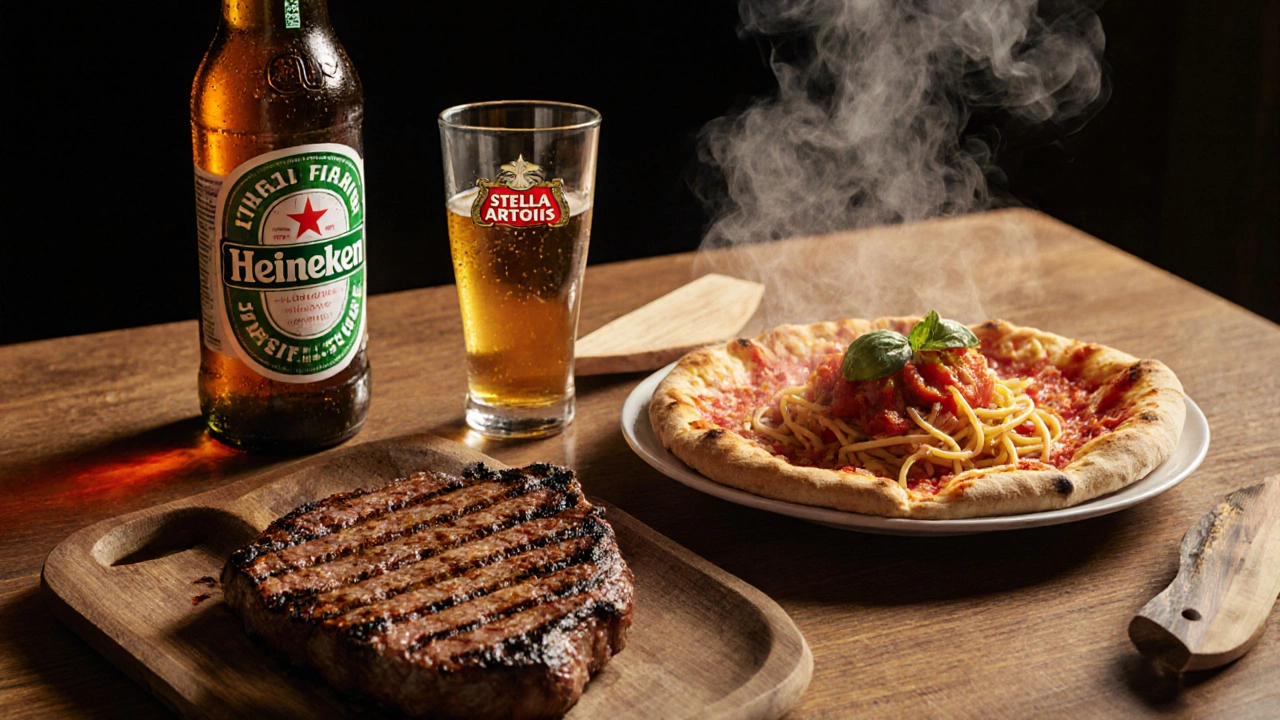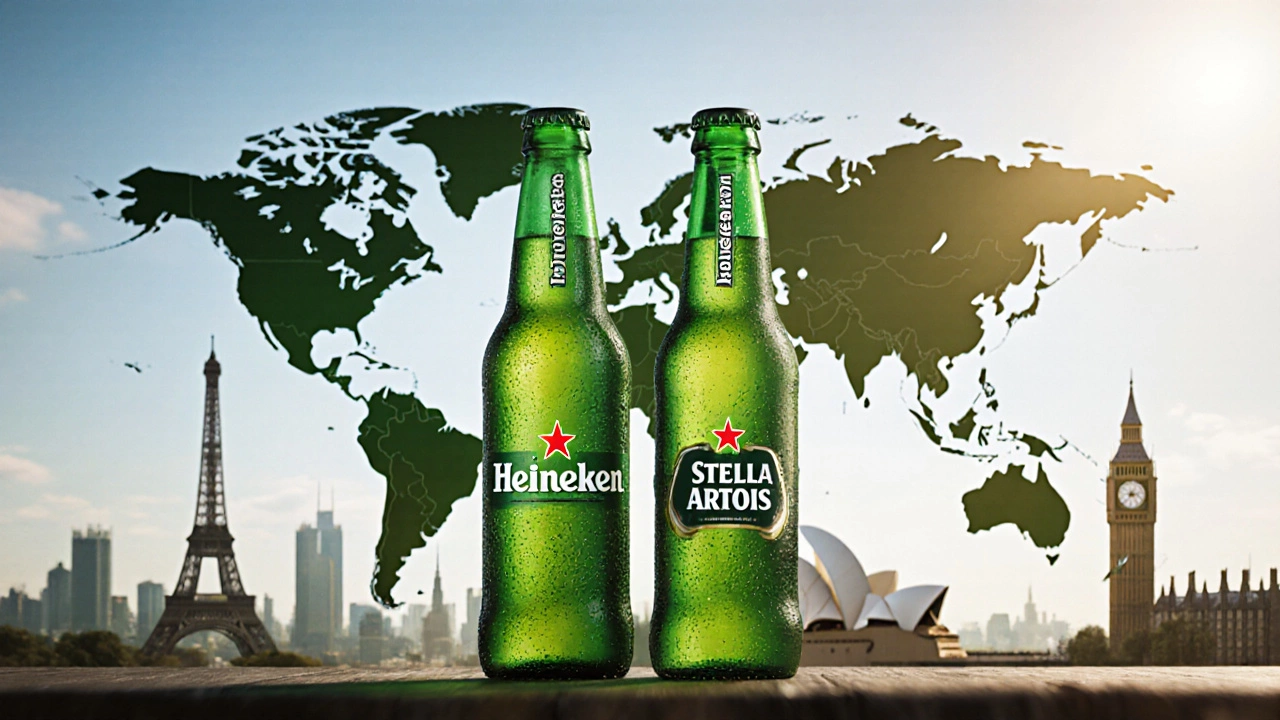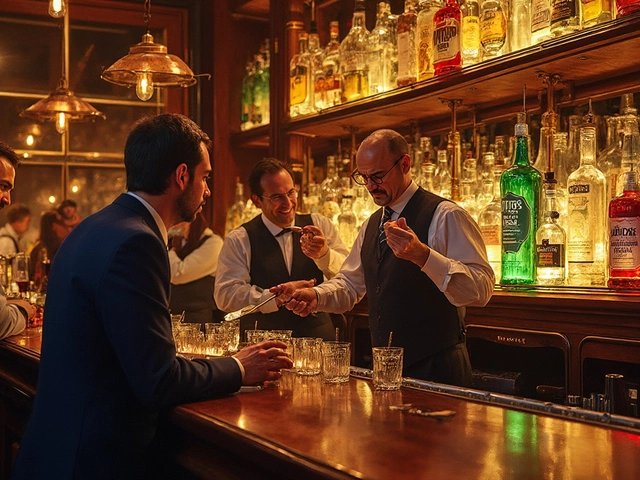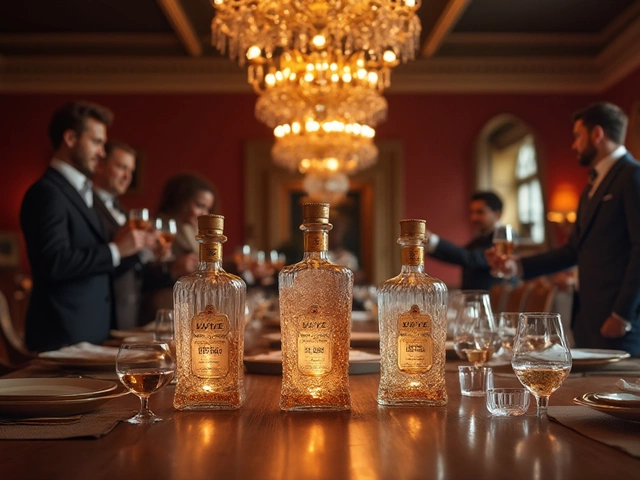Key Takeaways
- Heineken and Stella Artois are both 5% ABV premium lagers owned by Anheuser‑Busch InBev.
- Heineken enjoys higher global brand recognition (87% in the US) and a stronger presence in 190 countries.
- Stella Artois offers a slightly lighter body, a crisp dry finish, and is praised for Italian‑style food pairings.
- Both beers are packaged in green glass, making them vulnerable to light‑struck “skunky” flavors if stored poorly.
- Price points are nearly identical; the choice often comes down to personal taste, storage habits, and pairing needs.
When you hear the question “Is Heineken better than Stella?” you’re really asking which of two globally‑known premium lagers fits your palate, wallet, and occasion. Let’s break down the history, taste, packaging, market data, and practical tips so you can decide which one earns a spot in your next beer festival tote.
Origins and Ownership
Heineken is a Dutch lager founded in 1873 by Gerard Adriaan Heineken after he bought the De Hooiberg brewery in Amsterdam (VinePair, 2023). It grew into a multinational with brewing facilities in more than 190 countries.
Stella Artois traces its roots to the 1366 Den Hoorn brewery in Leuven, Belgium, but the Stella brand launched in 1926 as a Christmas seasonal brew (VinePair, 2023). Today it reaches roughly 150 markets.
Both brands sit under the umbrella of Anheuser‑Busch InBev, the world’s largest beer conglomerate. This shared ownership means distribution networks overlap, yet each brand maintains distinct marketing angles - Heineken as “global everyday premium,” Stella as “refined European lager.”
Alcohol Content and Core Ingredients
Standard Heineken and Stella Artois both list 5% ABV in most markets, though the UK version of Stella sometimes reads 4.6% (Tesco video, 2023). The flavor differences stem from their yeast and hop choices.
Heineken relies on a proprietary “A‑yeast” strain developed in 1886 at the Rotterdam lab (VinePair, 2023). Its recipe includes water, malted barley, hop extract, and that A‑yeast.
Stella uses Saaz hops plus malted barley and water, with production shifting to the U.S. in early 2021 (VinePair, 2023). The Saaz hop contributes subtle vegetal aromas that many tasters note.
Taste Profile - What’s on Your Palate?
In blind taste tests, volunteers often find the two beers “indistinguishable” (The Independent, 2023). Still, nuanced reviews highlight consistent patterns:
- Heineken: Bright, crisp malt‑hop balance, lingering finish that stays in the mouth longer.
- Stella Artois: Light‑bodied, slightly sweeter aftertaste, a dry finish that many describe as “refreshing.”
Food‑service professionals echo these notes. Joe Palminteri, area director at Via Sophia in Washington, D.C., prefers Stella with pizza, wings, or pasta because the “crisp dry finish” cuts through rich sauces (VinePair, 2023). A Men’s Health writer, however, crowned a well‑stored Heineken as the clear winner in a separate blind test (VinePair, 2023).

Packaging, Light Exposure, and Storage
Both lagers are sold in iconic green glass bottles-Heineken’s green bottle is solid, while Stella’s has a paper neck label for a premium feel. Green glass transmits more UV light than brown, making the beers susceptible to “skunkiness” if left in bright conditions. Reddit threads frequently warn that a Heineken left on a sunny windowsill can develop off‑flavors quickly, a complaint echoed for Stella’s bottles alike.
Best practice: store bottles upright in a cool, dark place (45‑55 °F). If you buy a six‑pack, keep it in the fridge only after opening; before that, a pantry or cooler works fine.
Food Pairing - What Goes Best With Each?
Neither brand publishes official pairing guides, but industry experts suggest:
- Heineken: Works well with grilled meats, spicy Asian dishes, and burgers. Its brighter profile complements charred flavors.
- Stella Artois: Ideal with Italian fare-pasta, pizza, and risotto-as well as fried foods like fish‑and‑chips. The dry finish cleanses the palate between bites.
If you’re at a beer festival, carry a small tasting glass for each, then try both with the same dish to see which elevates the flavor more.
Price, Availability, and Market Position
In 2023, major U.S. retailers priced both at $10.99 for a six‑pack of 12‑ounce bottles, reflecting a 5.2% YoY increase (Beverage Marketing Corp). The price gap is negligible, so cost isn’t a deciding factor.
Brand recognition in the United States stands at 87% for Heineken vs 81% for Stella (YouGov, 2023). Heineken also ranks #2 globally on Wikiliq’s 2025‑2026 brand list, with Stella at #3.
Both benefit from Anheuser‑Busch’s distribution, but Heineken’s presence in 190 countries gives it a broader shelf‑life, especially in emerging markets.
Non‑Alcoholic Options
Heineken 0.0 mirrors the flavor of its alcoholic sibling remarkably well, according to Chowhound’s review (2023). Stella’s 0.0 version receives less fanfare; reviewers note a lighter taste but no strong standout characteristics.
If you’re looking for a non‑alcoholic lager that still feels “premium,” Heineken 0.0 currently holds the edge.
Sustainability and Future Outlook
Heineken International aims for carbon‑neutral brewing by the end of 2025 under its “Brewing a Better World” program. Stella’s parent, AB InBev, is investing $200 million in U.S. production facilities through 2025, indicating a commitment to local sourcing and reduced transport emissions.
Both brands are expanding limited‑edition lines-Stella’s Solstice and Midnight lagers, Heineken’s seasonal variants-keeping the portfolio fresh for festival‑goers.
Quick Decision Guide
- Do you prioritize brand reach and consistency? Choose Heineken.
- Do you prefer a lighter body and crisp dry finish with Italian food? Go with Stella Artois.
- Is storage a concern (e.g., you’ll be outdoors at a festival)? Both are vulnerable, but keep them in a cooler bag away from sunlight.
- Looking for a non‑alcoholic alternative that tastes close to the original? Heineken 0.0 wins.
In the end, scientific blind tests say you can’t tell them apart. Your preference will hinge on taste nuance, food pairing, and how you store the bottles.
Comparison Table
| Attribute | Heineken | Stella Artois |
|---|---|---|
| Year Founded | 1873 | 1926 (brand) |
| ABV | 5.0% | 5.0% (4.6% UK) |
| Primary Yeast | A‑yeast (1886) | Standard lager yeast |
| Key Hop | Hop extract | Saaz hops |
| Global Rank (2025) | #2 | #3 |
| US Brand Recognition | 87% | 81% |
| Typical Six‑Pack Price (US, 2023) | $10.99 | $10.99 |
| Bottle Type | Green glass, solid | Green glass, paper label |
| Food Pairing Highlights | Grilled meats, spicy Asian | Italian cuisine, fried foods |
| Non‑Alcoholic Variant | Heineken 0.0 - strong flavor match | Stella 0.0 - lighter, less distinctive |
Frequently Asked Questions
Is Heineken or Stella more popular in Australia?
In Australia, Heineken leads with roughly 55% market share among premium lagers, while Stella holds about 30% (IRI data, 2023). The gap mirrors global trends where Heineken enjoys broader recognition.
Do the green bottles affect taste?
The glass itself doesn’t change flavor, but green glass lets more UV light through. If the beer is exposed to sunlight, it can develop “skunky” off‑flavors, especially in warm weather.
Which beer works better with spicy food?
Heineken’s brighter hop character tends to balance heat better, making it a solid choice for Thai or Mexican dishes. Stella’s lighter body can be overwhelmed by strong spices.
Are there any notable differences in calorie count?
Both standard lagers contain around 150 calories per 12‑oz bottle. The non‑alcoholic versions are slightly lower, with Heineken 0.0 at about 80 kcal and Stella 0.0 near 90 kcal.
Which brand is more sustainable?
Heineken has set a carbon‑neutral goal for 2025 across its brewing operations. Stella’s parent AB InBev is investing heavily in U.S. facilities with a focus on local sourcing, but Heineken’s explicit carbon‑neutral timeline gives it a slight edge in sustainability commitments.


